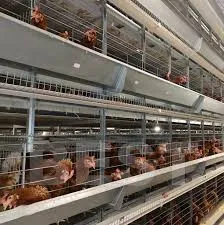animal feed processing machine
Des . 06, 2024 13:02 Back to list
animal feed processing machine
The Evolution of Animal Feed Processing Machines
In the modern agricultural landscape, the production of high-quality animal feed is essential for ensuring the health and productivity of livestock. As the demand for animal protein continues to rise globally, so does the need for efficient and effective feed processing technologies. This is where animal feed processing machines come into play, revolutionizing the way feed is produced, processed, and delivered.
Animal feed processing machines encompass a wide range of equipment designed to create feed that meets the specific nutritional needs of various livestock species. These machines can process ingredients such as grains, supplements, and additives into finished feed products. The core objective is to enhance the digestibility and nutrient availability of the feed, supporting optimal growth and health in animals.
One of the primary types of feed processing machines is the hammer mill. This machine is crucial for grinding raw materials into finer particles, making it easier for animals to digest their food. A well-functioning hammer mill increases the surface area of the ingredients, facilitating better nutrient absorption. Additionally, it allows for the blending of various components to create a balanced and nutritious feed mixture.
Another essential machine in the feed processing line is the mixer. Feed mixers play a vital role in ensuring that all ingredients are thoroughly blended before the material is pelleted or extruded. This step is critical for producing a consistent feed product where nutrients are evenly distributed. Various designs of mixers are available, including horizontal and vertical models, each offering unique advantages based on the specific production needs.
animal feed processing machine

Once the raw materials are ground and mixed, the feed must often be processed further to enhance its palatability and shelf life. Pellet mills are commonly used for this purpose. These machines compress the feed mix into pellets by applying heat and pressure, resulting in a dense, uniform shape that is easy for animals to consume. Pelleting not only improves the texture and aroma of the feed, but it can also reduce waste and improve storage efficiency.
Extrusion is another innovative technology used in animal feed processing. This method involves cooking the feed mixture under high temperature and pressure, which gelatinizes starches and improves nutrient digestibility. Extruded feeds are particularly popular in aquaculture and pet food industries, as they provide a high level of digestibility and can be formulated into various shapes and textures to attract specific animal species.
Furthermore, advancements in automation and control technology have transformed the animal feed processing industry. Incorporating sensors, software, and robotics into the production line enhances precision and efficiency in feed formulation and processing. These technologies allow for real-time monitoring and adjustment of feed quality, ensuring that the nutritional requirements of livestock are consistently met.
The significance of animal feed processing machines extends beyond mere production efficiency; they also play a crucial role in ensuring food safety. By utilizing modern machines, feed manufacturers can implement rigorous quality control measures to prevent contamination and guarantee the safety of feed products. This is increasingly important in light of growing consumer concern about food safety and sustainable farming practices.
In conclusion, animal feed processing machines are integral to the modern livestock industry, transforming raw ingredients into nutritionally balanced feeds. From hammer mills to pellet mills and advanced extrusion equipment, these machines enhance the efficiency, safety, and quality of animal feed production. As technology continues to evolve, we can expect even greater advancements that will further improve the way we nourish our livestock, thereby supporting a sustainable food future.
-
High Performance Exhaust Fan – Efficient Ventilation Solutions for Home
NewsJun.10,2025
-
High-Quality Gestation Pen for Sows Durable Mobile Pig Pen & Simple Pig Pen Solutions
NewsJun.10,2025
-
High Quality Rabbit Cage Double Tier Designs & Welded Wire Mesh Supplier
NewsJun.10,2025
-
Floating Fish Feed Machine - High Efficiency Floating Fish Feed Extruder for Small Scale Production
NewsJun.10,2025
-
Premium Poultry Housing Solutions Mobile & Commercial Free Range Options
NewsJun.10,2025
-
Industrial FRP Fans Corrosion-Resistant Blades & Centrifugal Systems
NewsJun.09,2025






